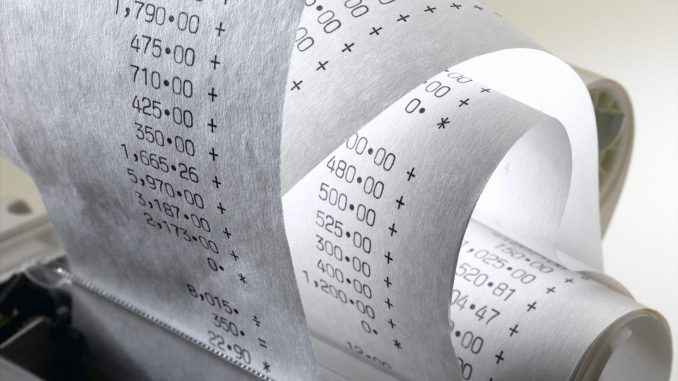
By Steve Levy
Spending caps work. That is the conclusion reached by the Center for Cost Effective Governance after reviewing spending and/or tax caps that have been implemented in approximately 30 states.
High-spending states underperform low spending states in key growth and productivity metrics.
The Alaska Foundation, which examined the need for a cap in the Frontier State, noted that the tax burden per capita for states without an income tax is $5,006, whereas that burden is a much larger $6,856 in states with an income tax. Meanwhile, for the period of 2008-2018:
- No-income-tax states saw an 11.2% growth in population as compared with a mere 6.1% growth in those with an income tax.
- States without an income tax saw a 45.1% growth in personal income, while such growth was only 39.5% in states with an income tax.
Take New York, for instance, which has no cap on its state spending, and is ranked at, or near, the bottom of the list of states with the friendliest tax climates, according to the nonprofit Tax Foundation.
A report from the New York State Comptroller notes that, between 2014 and 2018, the state budget increased by 19.1%, despite inflation rising a mere 5.4%.
Had the budget merely stayed in sync with the inflation rate, taxpayers would have saved almost $22 billion over that period. Since then, the budget astoundingly increased yet another $40-plus billion.
The state budget was $164 billion in 2018, but skyrocketed to approximately $212 billion by 2021. While the pandemic could explain much of the increase in 2021, there was no such emergency in prior years to justify this spending explosion.
Spending in New York is so out of line with the rest of the nation that the state of Florida — which has four million more people and no income tax — has a budget that is half the size of New York’s ($101.5 billion).
As of 2018, New York was spending more on Medicaid than Florida and Texas combined.
New York spends twice the national average per pupil on education, yet its student performance ranks in the bottom half of the 50 states. The immense infusion of additional state education aid over the last decade has done little to nothing to improve scores.
This could account for why there has been a major exodus of New Yorkers seeking lower taxes elsewhere. Over the last 10 years, more people (1.4 million) fled New York State than any other state in the union. Over 125,000 moved out of New York for more affordable areas from 2019-2020 alone.
As stated by The Alaska Foundation:
Americans in search of better opportunities often turn to states that are economically attractive. This is a boon for states whose fiscal house is in order and outlook is bright, but a substantial growth deterrent for states whose outlook is already dire. According to the IRS, this annual shift in domestic population represented $3 trillion in adjusted gross income (AGI) in aggregate from 1997 through 2016.
The irony is that, while in 2011 the New York State legislature mandated a property tax cap be adhered to by schools, counties and local governments, they exempted themselves from any spending restraints. Legislators got great press for helping to curb taxes (only in jurisdictions they don’t control) while still giving themselves the out to spend and tax at will on the state level.
Nonetheless, the 2% local property tax cap they implemented is a quintessential example of how a cap can work effectively.
From 1982 to 2011, school taxes in New York increased at a rate of 6 percent a year, growing from $3.5 billion to $19.7 billion, or more than three times faster than inflation.
The hit was especially hard on Long Island, where taxes are quadruple the national average, though house values are only double the national average.
But, once the cap took effect in 2012, the average annual increase dropped to approximately 2%. That resulted in a $25 billion saving statewide.
The savings on Long Island alone amounted to $8.7 billion through 2018. That’s $7,611 for the average Nassau taxpayer.
The greatest value of a cap is that it forces elected officials to prioritize their spending wishes. Legislators on every level of government, from the school board to Congress, are lobbied incessantly by various interest groups seeking more funding. The last thing officials want is to alienate themselves from these groups that supply votes, campaign workers and donations — as well as goodwill amongst their followers.
A cap gives legislators needed cover to explain why a particular proposal did not make the cut in any particular year.
New York recently set aside billions of dollars to provide benefits to illegal aliens residing in the state during the pandemic. It is highly questionable as to whether such folly would have passed had a cap been in place.
The best cap is one that:
- A) Is passed through a constitutional amendment, thereby minimizing the potential for dilution of the cap by future legislative sessions.
- B) Relates to total spending, not just a discretionary part of the budget.
- C) Is tied to the rate of inflation, and has few loopholes.
- D) Requires a supermajority to pierce the cap.
This year’s elections, including for New York’s governor, takes place in two weeks. Time will tell if any candidate makes this spending cap proposal a platform cornerstone in order to gain the mandate needed to end New York’s ignoble distinction of regularly being listed at the bottom of the list of affordable places in which to live and work.
Steve Levy is Executive Director of the Center for Cost Effective Government. He served as Suffolk County Executive, as a New York State Assemblyman, and host of “The Steve Levy Radio Show.” www.SteveLevy.info, @SteveLevyNY

